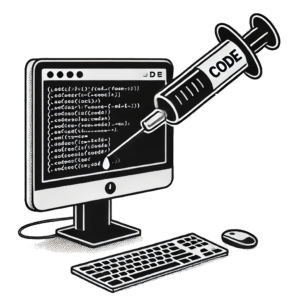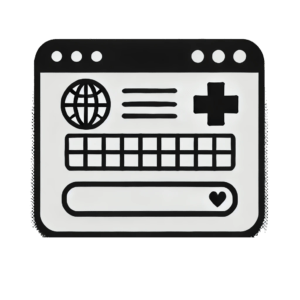Understanding Code Injection

Code injection is a dangerous cybersecurity threat that can cause serious harm if not properly dealt with. Hackers use it to sneak harmful code into a system, which lets them control how it works and even steal important information. To avoid falling victim to code injection attacks, software developers need to follow strict coding practices like checking user inputs, encoding data, and using secure database methods.
By making sure all user inputs are safe, encoding data to keep out bad code, and using secure database communication, developers can lower the risk of these attacks.
Keeping up with the latest security risks and understanding how code injection works is crucial for creating safe programs that can withstand cyber threats.
What is Secure Coding
Secure coding is all about making sure that the code written for applications is safe from cyber attacks. It is really important for keeping software systems secure and working properly. Code injection is a sneaky way that hackers can use to attack poorly written applications. But by following some good tips for writing secure code, developers can help prevent these kinds of attacks.
To keep your app safe from hackers, there are a few important things to remember. First, always check the information people give you to make sure it’s safe. When you talk to your app’s database, use a special kind of query that keeps out sneaky code. And when you save people’s info, use tools that clean it up first. It’s also a good idea to learn about new security risks and follow the rules for safe programming from groups like OWASP.
Common Types of Code Injection Attacks
SQL Injection (SQLi)
SQL Injection (SQLi) is a common threat in web applications that arises when malicious SQL statements are inserted into an entry field to manipulate the database. Preventing SQL Injection attacks is crucial for maintaining data security and integrity. Implementing parameterized queries, input validation, and using ORM frameworks like Hibernate can help safeguard against SQL Injection vulnerabilities. Regularly updating and patching software, restricting database permissions, and conducting security audits are also essential best practices for secure coding to prevent SQL Injection attacks. By following these guidelines, developers can fortify their code against malicious injections and protect sensitive data.
Cross-Site Scripting (XSS)
When it comes to keeping web applications safe from hackers, Cross-Site Scripting (XSS) is a major concern. Hackers can use XSS to sneak harmful code into a website by exploiting areas where you can type text. This can lead to them getting into the website without permission, stealing information, and causing other serious issues. To reduce the risk of XSS attacks, developers need to follow guidelines for writing secure code. This includes checking and cleaning up any text users type in, using safe coding tools, and updating software regularly to fix any known problems. By focusing on writing secure code, companies can make it harder for hackers to use XSS and protect important information.
Command Injection
Command injection is a type of security issue where a bad person can run any commands they want on a computer system. To stop this and keep our systems safe, developers need to follow some important rules when writing their code. One key way to prevent this is by checking and cleaning up any input from users, so it doesn’t get mistaken for commands. It’s also important to have strong ways of making sure only the right people can do certain things on a system. Regular checks and reviews of the code are also really important to make sure we catch any problems before someone with bad intentions can cause harm.
Best Practices for Secure Coding
Validating and Sanitizing Inputs
To prevent hackers from sneaking harmful code into your system, it’s important to carefully check and clean up any information users input. This involves making sure the data is in the right format and doesn’t contain any dangerous characters. This is a good way to keep your system safe from attacks. Remember to consistently watch out for and protect the information users input to keep your system secure.
Using Parameterized Queries
To prevent hackers from injecting dangerous code into your website or app, it’s important to use something called parameterized queries. This is a way for developers to separate the code they write from any input from users, which can help stop attacks that try to sneak in harmful code. By treating user input as just regular data, not executable code, you can make sure your site or app stays safe and keeps sensitive information secure. Following this step can help make sure your applications are extra secure and keep unauthorized users from getting access to important data.
Leveraging Coding Standards and Frameworks
When it comes to preventing code injection, following coding standards and utilizing secure frameworks play a crucial role in safeguarding applications against vulnerabilities. By adhering to industry best practices and guidelines, developers can decrease the likelihood of malicious code injection attacks, enhancing the overall security posture of their software. Leveraging well-established coding standards not only ensures cleaner and more maintainable code but also helps in reducing the risk of injection flaws. Furthermore, integrating security measures from the initial stages of development through established frameworks adds an extra layer of protection, fortifying your application against potential threats.
Impacts of Code Injection Attacks
Financial Impact
When it comes to preventing code injection, understanding the financial impact of vulnerabilities is crucial. Code injection attacks can lead to data breaches, financial loss, and damage to reputation, resulting in significant financial consequences for organizations. By implementing best practices such as input validation, parameterized queries, and escaping user input, companies can mitigate the risk of code injection attacks and avoid costly repercussions. Investing in secure coding practices not only protects sensitive information and systems but also saves money in the long run by avoiding costly security incidents and regulatory fines.
Reputational Impact
Preventing code injection is paramount in safeguarding your organization’s reputation. Code injection attacks can lead to severe consequences, such as data breaches, financial losses, and tarnished brand image. Implementing best practices is crucial in mitigating these risks. By following secure coding guidelines, such as input validation, using parameterized queries, and regular code reviews, you can fortify your defenses against code injection vulnerabilities. Building a secure coding culture within your development team not only protects your systems from malicious attacks but also enhances trust in your organization among customers, partners, and stakeholders.
Legal Consequences
When it comes to preventing code injection in secure coding practices, understanding the legal consequences is crucial. Failure to implement proper security measures against code injection can lead to severe legal penalties, including data breaches, privacy violations, and non-compliance with industry regulations such as GDPR and HIPAA. Organizations must prioritize secure coding techniques like input validation, parameterized queries, and proper encoding to mitigate the risk of code injection attacks. By taking proactive steps to secure their code, companies can avoid costly legal battles and safeguard their reputation in an increasingly interconnected digital landscape.
Conclusion and Future Perspective
Summary of Secure Coding Practice
Preventing code injection is a crucial part of writing secure code to protect against attackers who try to manipulate how an application works by adding unauthorized code. To boost security, developers should follow some key guidelines like checking user input, using a certain style of writing queries, and using secure frameworks for coding. Checking user input makes sure that the information users type in is safe and meets particular standards, reducing the chance of injection attacks. Writing queries in a certain way helps block SQL injection by separating the code from the data being entered. Also, using secure coding frameworks like OWASP’s Top Ten can help find and fix common weaknesses early on in the development process. By following these guidelines and keeping up with new threats, developers can make their code stronger against possible attacks and improve the overall security of their applications.
Future Direction in Preventing Code Injection
In the world of cybersecurity, it’s important to protect against code injection, a method hackers use to exploit vulnerabilities. Developers need to constantly improve their practices to prevent this. Implementing strong input validation, using security tools, and following secure coding guidelines are the way forward. Regular security checks and testing can help find and fix weaknesses before they’re attacked. Using artificial intelligence and machine learning can also help detect and prevent harmful code injections. Being proactive and staying up-to-date on cybersecurity threats is crucial to keeping your defenses strong against code injection attacks.
